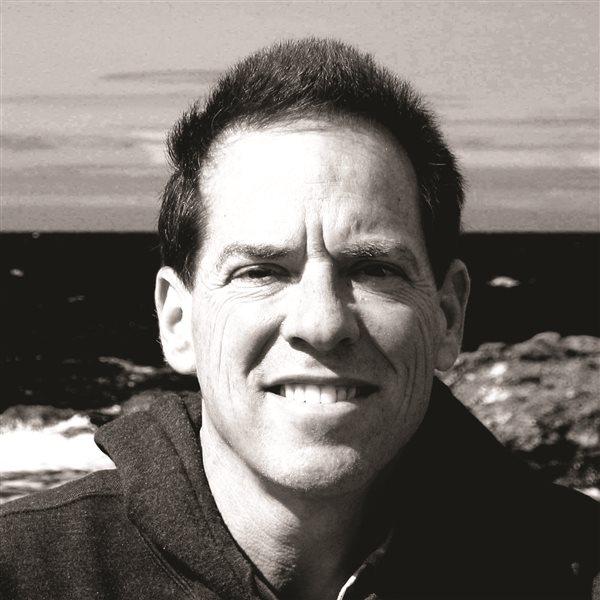Conquering unfriendly cloudscapes
"Where's the tournament?" I asked, swelling with pride. "And when?"
"In El Paso, next month!" she exclaimed.
"El Paso in August?" I asked. "Why not somewhere cooler?"
"That's what everyone wonders--but still, it's the sectionals. Let's take the Flying Carpet! Can my teammate Eileen join us?"
"Sure!" I said.
"Good!" beamed my wife. "Her boyfriend John wants to come, too." Oops! Eileen and John are admirably fit, but my calculations soon confirmed that four of us with baggage and fuel to El Paso would load our airplane to its maximum weight. While rarely a problem elsewhere, here in mountainous Flagstaff the summertime density altitude often exceeds 10,000 feet. Even departing at dawn we dared not attempt takeoff at gross weight. And what if wind or weather dictated more fuel? "Couldn't we refuel along the way?" asked Jean, agitated.
"Yes, but any refueling stop would still exceed 5,000 feet in elevation, and we'd depart there later in the day when the density altitude problem is even worse." Not wanting to upset anyone, I showed Jean the numbers and dodged further questions. Poor John dropped from our plans.
With no other spouses attending and the eight women players booked solid with tennis, I decided to drop Jean and Eileen in El Paso on Thursday and retrieve them on Sunday. For me it meant two grueling flying days, but Jean and Eileen would reap the benefits. While their teammates drove two and one-half hours to Phoenix Sky Harbor Airport to endure parking hassles and security lines, we'd land at El Paso before the other players even boarded their airline flights. What's more, we'd carry coolers and gear that the others could only leave behind.
As the day approached, I became increasingly concerned about weather. For weeks daily monsoonal thunderstorms had bombarded Arizona and New Mexico. Hopefully an early departure would allow me to drop the girls in El Paso and get back before the inevitable afternoon storms began. Otherwise I'd stay overnight.
"You've got good visual conditions the entire way," said the briefer to my delight on departure morning. "All stations report clear below 12,000 feet except Show Low in eastern Arizona, which has 10 miles visibility and broken clouds at 1,500 feet." Probably just some valley scud, I figured, squelching unease that those clouds might obscure nearby mountains. After all, it wasn't in the forecast. "Returning this afternoon could be more challenging," added the briefer before sharing thunderstorm forecasts. Oh well, I learned long ago to address extended flights one leg at a time--if I get stuck overnight, so be it. All that mattered was delivering the girls to their match.
Our packed cabin and painfully slow climb after takeoff erased my lingering guilt over our empty fourth seat. As we clawed skyward, the girls ooohed and ahhhed over cloud-dolloped hilltops and fog-frothed valleys. A high overcast shielded our eyes from the morning sun. But sure enough, over the White Mountains near Show Low, clouds began forming at our altitude. We climbed to 11,500 feet and tapped our portable oxygen tank to keep alert. Soon we dodged cumulous puffs while ahead the horizon faded in light rain. I did not like the trend.
"Can we get an instrument clearance?" I asked Albuquerque Center. "And if so, at what altitude?" Some mountain airways are above our reach.
"I can issue one now at 11,000 feet, with a climb to 12,000 near Silver City, New Mexico," came the reply. With warm outside temperatures and no chance of ice, I accepted the offer. Funny how one sometimes hesitates to transition to instruments, but once there the stress and workload so often go down. Filing instruments was the wise and safe thing to do, yet as we continued, the ground remained mostly visible beneath us. In no time my anxiety evaporated.
Although thunderstorms threatened El Paso from the east, it soon became apparent that I could easily get in and out before they arrived. But could I get home? With growing alarm I watched rain cells multiply behind us on the satellite weather screen. So far they were well south of our route, but it was only 8:30 and this weather wasn't forecast until afternoon. Glad I brought my overnight bag....
As expected, dark clouds rumbled to the east when we landed at Do�a Ana County Airport, just across the New Mexico border from El Paso. While I updated weather and my instrument flight plan, the girls unpacked the airplane. Within minutes I launched on what still seemed a clear shot home.
A problem soon arose, however. The Southwest is checkered with special-use airspace. As I steered homeward, military flights began along the Arizona/New Mexico border, and Center rerouted me across southern New Mexico and Arizona to Phoenix, then north to Flagstaff. Not only was it a colossal detour, but clogging my new route 100 miles ahead were those ugly yellow weather blobs that I so wanted to avoid.
With each new controller I checked airspace status and begged permission to steer toward Flagstaff. By the time my wish was finally granted, radar splotches peppered that route, too. Fortunately they remained scattered, so I could circumnavigate them. Increasingly confident that I'd make it home, I soon savored a magical journey through sun-splattered good-and-evil cloudscapes towering twice the height of the grand green mountains beneath me.
Following one last deviation over Winslow, I touched down at Flagstaff five and one-half flight hours after leaving. It was only 2 p.m., so I steered downtown to toast the girls' tennis success over my favorite cappuccino.
Greg Brown was the 2000 National Flight Instructor of the Year. His books include Flying Carpet, The Savvy Flight Instructor, The Turbine Pilot's Flight Manual, Job Hunting for Pilots, and You Can Fly! Visit his Web site.



